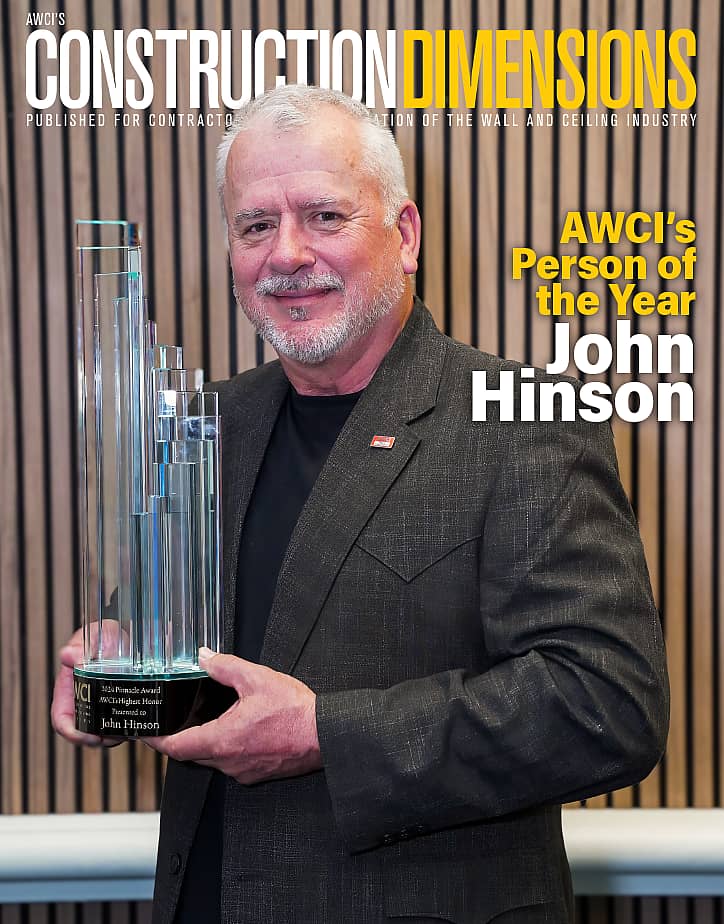Finally, someone has gotten the gumption to take some action. On Oct. 8, mechanical systems designer Henry Gifford filed a class action lawsuit in federal court alleging that the U.S. Green Building Council has fraudulently misled owners, architects and contractors into believing that LEED certified buildings are more energy efficient than their non-LEED counterparts. Of course, I’ve spent several years trying to convince my quantifying peers in the construction industry of the dubious value of the whole LEED concept, much to the chagrin of global warming alarmists.
But regardless of whether you’re a healthy skeptic or a true believer, we should all reject any organization that pretends to affect positive environmental change when, in reality, its main purpose is to manipulate powerful market interests. And that is exactly what the outsized U.S. Green Building Council along with its disproportionately-empowered accomplice, LEED, is: a shameful imposter.
Admittedly, the notion of an environmental watchdog over the construction industry might sound like a worthy endeavor. After all, for many of us, the fact that this all makes us feel good is good enough. And if LEED’s worst offense was only that it adds cost to a project, while adding no real value, few heads would be turned. But feel-good posturing in this case is worse than useless; it does more harm than good.
As I have stated before, I have four basic objections to the whole USGBC/LEED intrusion into our construction industry: outrageous cost; negative value; a cumbersome process; and the fact that the stated USGBC mission is a myth or a lie. Each of them makes argument that LEED is more of a detriment than a remedy.
Although the USGBC insists that a certified LEED building costs no more than a similar conventional project, this is clearly not the case. While initial registration costs are modest, LEED consulting fees run upward of $125 to $200 per man-hour (arguably multiplied times hundreds of hours per project) in addition to mandatory commissioning authority fees. The bottom-line sticker price varies, but studies show that LEED certification racks up an average added cost of $70,000 for a small commercial building!
Owners are persuaded to accept these accelerated costs up front by the promise that they will be negated or even trumped by accumulative energy savings. The results of the USGBC’s long-awaited (2008) survey tout that LEED buildings indeed consume 25 to 30 percent less energy. But marry damn liars with statistics, and the outcome is predictably disingenuous. Gifford’s suit contends that USGBC spinners skewed the results by comparing mean with median averages and by throwing decrepit old relic buildings into the mix. He argues that if you simply compare mean-to-mean, their own statistics show that LEED certified buildings actually use significantly more energy than similar non-certified buildings constructed in similar time periods in similar geographic locations. The suit cites numerous specifics that bear out this counterintuitive outcome, but the summation of them restates the theme of this writing: the USGBC and LEED are more concerned with creating the image of energy efficiency than with measurable results.
While this glaring violation of its own supposed purpose—energy efficiency (remember, Leadership in Energy and Environmental Design?)—is the basis for the argument in Gifford’s case against LEED, his stated purpose of the lawsuit is to preserve the credibility of the green building movement, my objections stem from my firsthand frustration in dealing with a cumbersome, ill-conceived, time-consuming and ultimately futile process. For me, other critical issues have arisen that further indicate a negative value to the whole process.
Perhaps the most insidious aspect of all the various facets to this dog-and-pony show lies with the overbearing manner in which the cumbersome LEED process is imposed. I say insidious because the general public is not privy to the way contractors are courted, then coaxed, then persuaded, then coerced, then strong-armed down the path to compliance.
LEED enforcement has been cleverly structured into a point system in which contractors are required to report certain green-friendly properties associated with their proposed building products and processes. The trouble with the point system, once again, is that it is based on image and not substance. Consequently, equal points may, for instance, be awarded for installing a $400 bicycle rack as for incorporating an upgraded HVAC system costing hundreds of thousands of dollars. One possible outcome with such a process is the award of a LEED certification for a project without tallying a single point in the category of energy efficiency.
And so it saddens me greatly to watch my colleagues hop through hoops like little lap dogs begging for meaningless “greenie points.” It’s not just the futility of the process, but rather the subtle coercion stemming from an underlying fear of being labeled “anti-green” and getting banned from the bidding process that troubles me most.
Next month: The big lie.
Vince Bailey is an estimator and project director for MKB Construction, a Phoenix, Ariz.–based wall and ceiling contractor.
- Events
-
-
- BUILD25: AWCI's Convention + Expo
March 31-April 3, 2025
Charlotte Convention Center
Charlotte, North CarolinaMore Events
-
-
-
- Education
-
-
- EIFS National CertificationDoing It Right ProgramsAdditional CoursesMore Learning Opportunities
-
-
-
- Media
-
- Resources
-
-
- Technical Resource LibraryHealth & SafetyFocuses & InitiativesMediaDirectories
-
-
-
- About
-




